
Plant Science Research Weekly: October 18
Blog, WWR Full PostGuest Editor :
Suresh Damodaran
I am a postdoctoral research associate in Dr. Lucia Strader’s lab at WUSTL. My primary area of interest is understanding the role of plant hormones in development. I completed my graduate degree in Dr. Sen Subramanian’s lab at SDSTATE. Twitter: @SureshDamod
Design…

Review: Structural biology of cell surface receptor–ligand interactions (COPB)
Plant Science Research WeeklyIn recent months, a flurry of papers have come out that reveal new insights into the structural interactions of cell-surface receptors with each other and with their ligands. This timely review by Moussu and Santiago captures the highlights, in case you haven’t been following along. The review features…
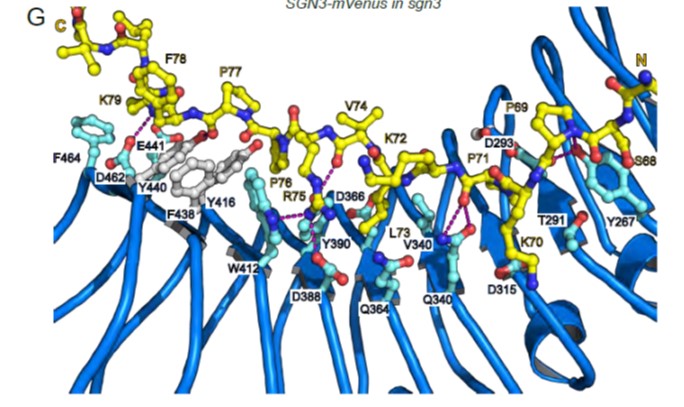
Recognition of sequence-divergent CIF peptides by the plant receptor kinases GSO1/SGN3 and GSO2 (bioRxiv)
Plant Science Research WeeklySCHENGEN 3 [SGN3, also known as GASSHO1 (GSO1)] is a leucine-rich repeat receptor kinase (LRR-RK) previously shown to interact with CIF peptides (CASPARIAN STRIP INTEGRITY FACTORS) to regulate the development of the Casparian strip boundary in roots. Here, Okuda et al. characterize the CIF/LRR-RK interaction.…
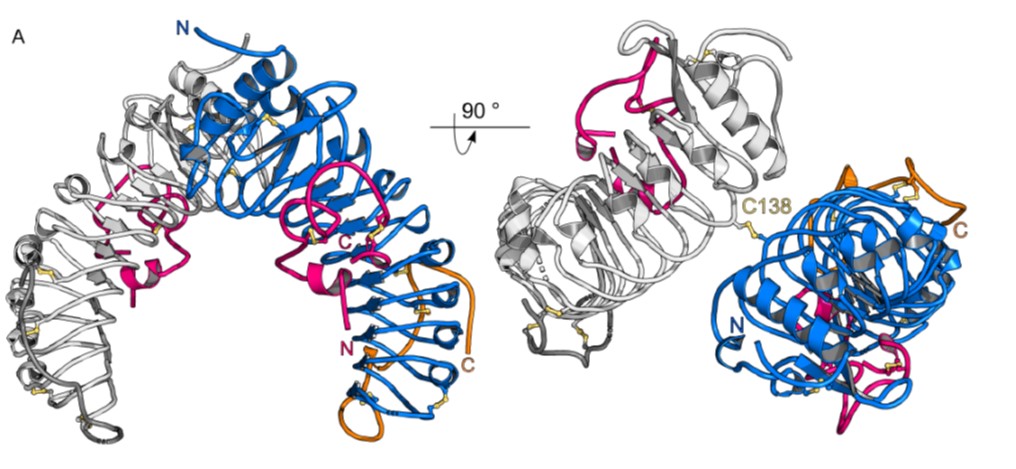
Structural basis for recognition of RALF peptides by LRX proteins during pollen tube growth (bioRxiv)
Plant Science Research WeeklyRALFs (Rapid Alkalinization Factors, based on historical observations that they induce alkalization of the extracellular space) are signaling peptides with diverse roles. RALF4 is required for pollen tube growth and guidance through its interactions with CrRLK1Ls and leucine-rich extension (LRX) proteins.…
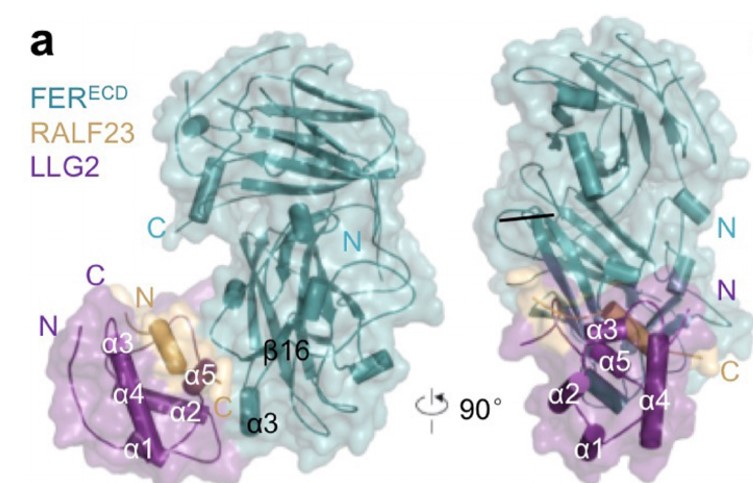
Mechanisms of RALF peptide perception by a heterotypic receptor complex (Nature) ($)
Plant Science Research WeeklyRALFs (Rapid Alkalinization Factors, based on historical observations that they induce alkalization of the extracellular space) are signaling peptides with diverse roles. RALFs have previously been shown to bind to the extracellular domain of (among others) FERONIA (FER), a member of the Catharanthus…
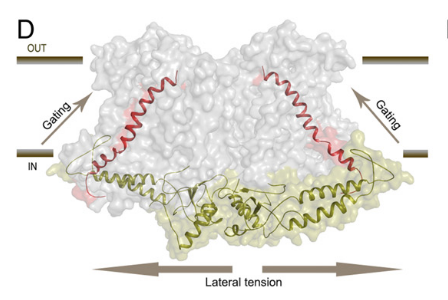
Cryo-EM structure of OSCA1.2 sheds light on the mechanical basis of membrane hyperosmolality gating (PNAS) ($)
Plant Science Research WeeklyOsmotic stress in plants elicits many responses, one of which is increased accumulation of Ca2+ in the cytosol. Genes involved in this response have been identified, yet the mechanism behind the Ca2+ transport remains unknown. Maity et al. investigated the structure and function of the osmolality-sensitive…
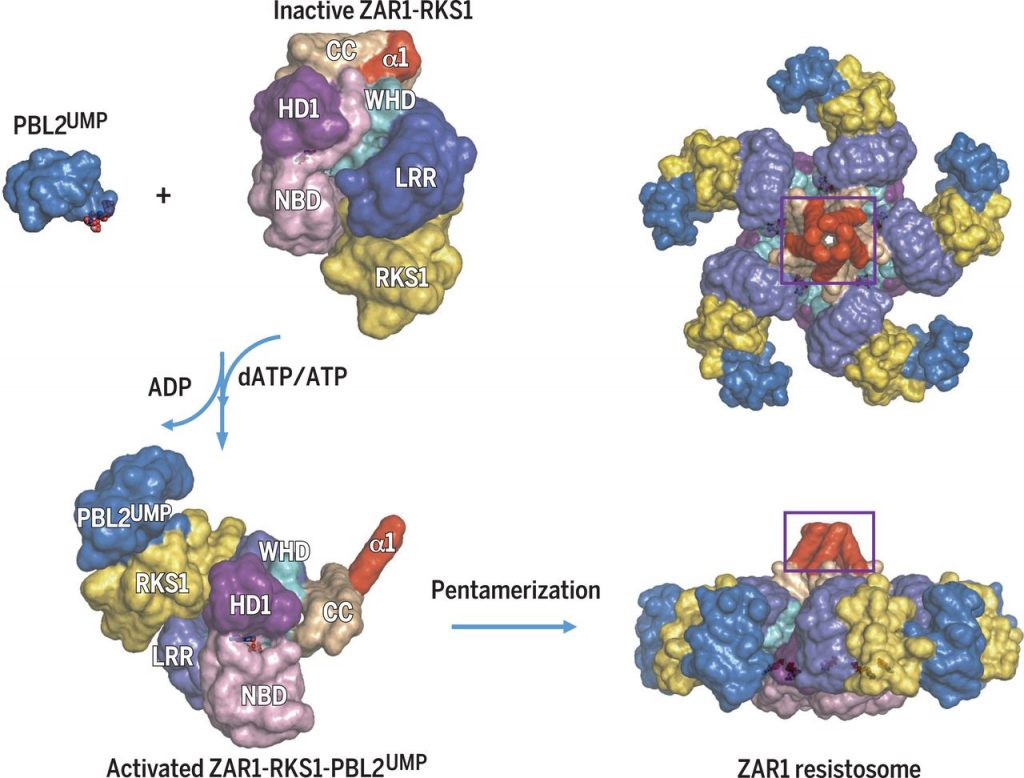
Structure and activation of a plant NLR resistosome ($) (Science)
Plant Science Research WeeklyThe 2017 Chemistry Nobel Prize went to the developers of cryo-electron microscopy, and this method is transforming plant science as well as other life sciences. In a pair of back-to-back papers, Wang et al. used cryo-EM to examine how ZAR1, a CC-NLR protein [Coiled-coil (CC) nucleotide-binding (NB),…

Structural analysis of HTL and D14 proteins reveals the basis for ligand selectivity in Striga (Nature Comm.)
Plant Science Research WeeklyStrigolactones induce germination of parasitic plant Striga, which causes more crop loss in Africa than any other parasite. Karrakins are structurally related to strigolactones, yet they do not induce Striga germination. By studying the structure and substrate recognition of strigolactone and karrakin-binding…

